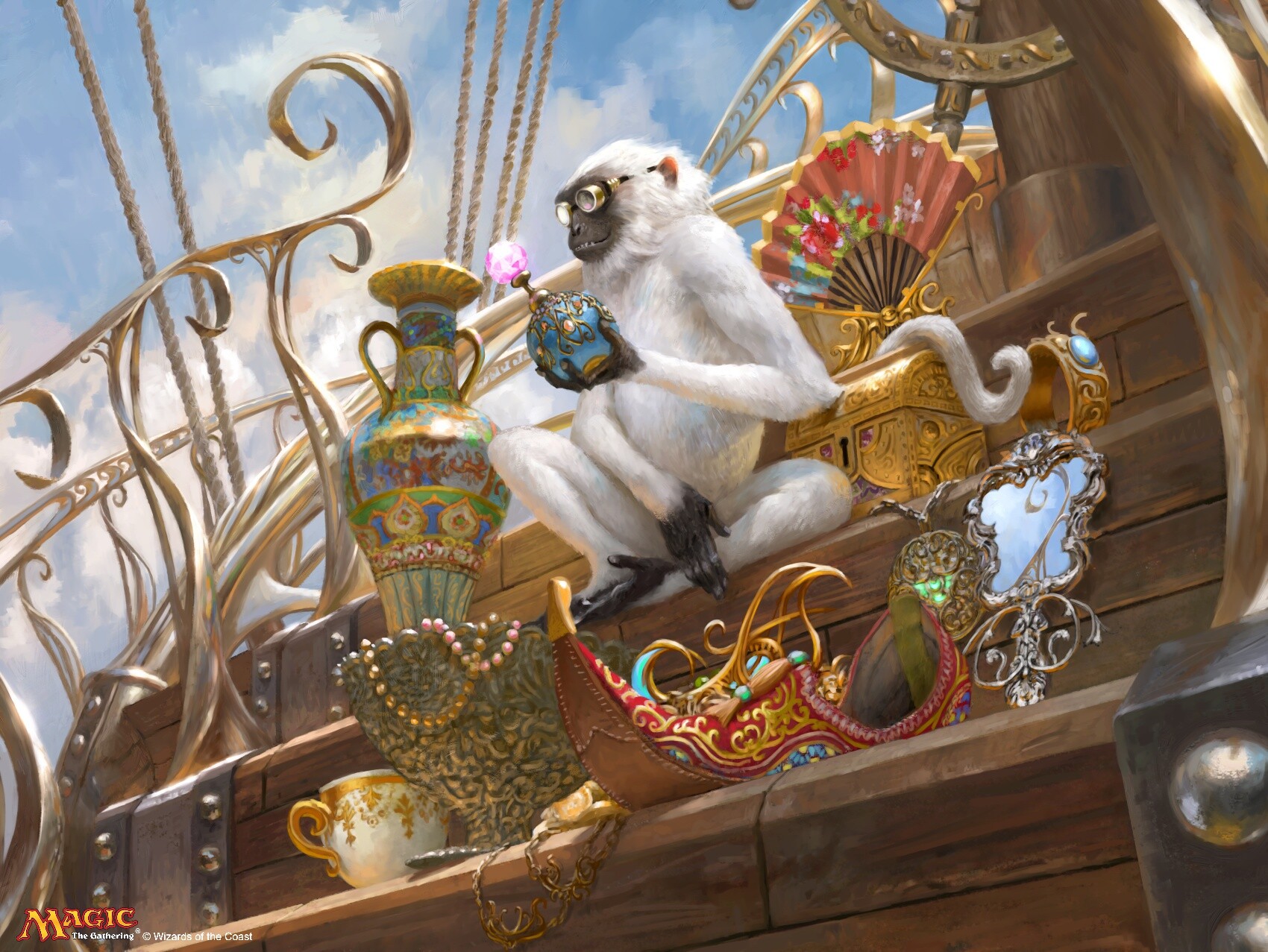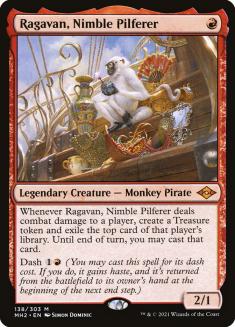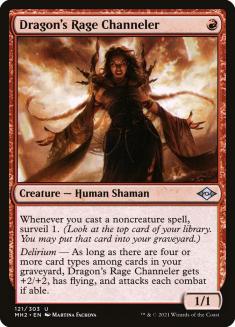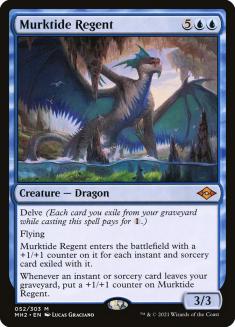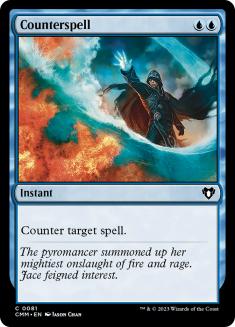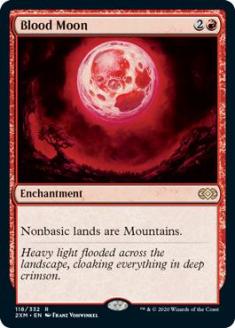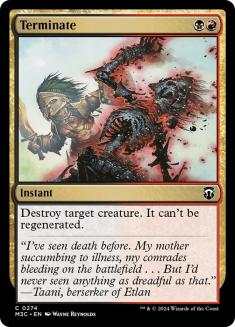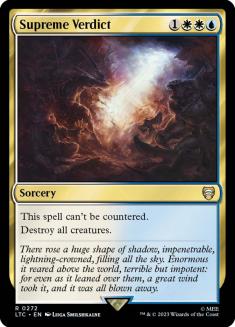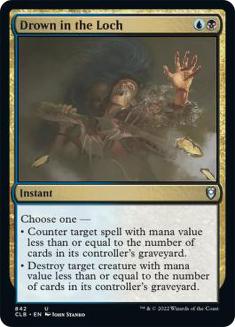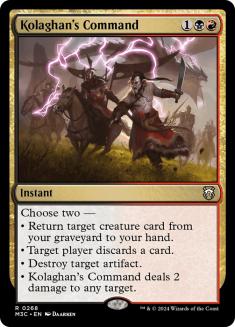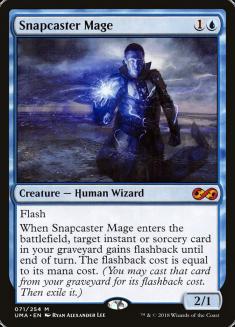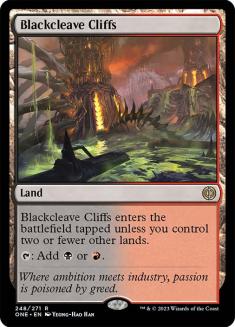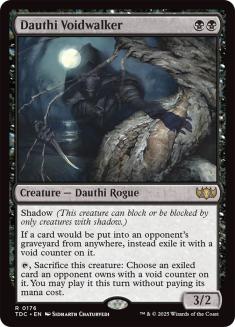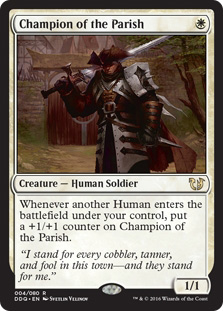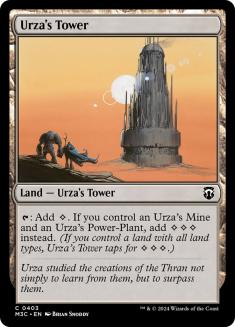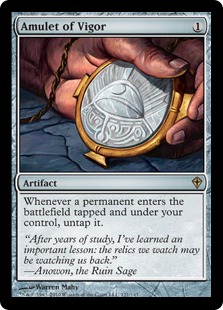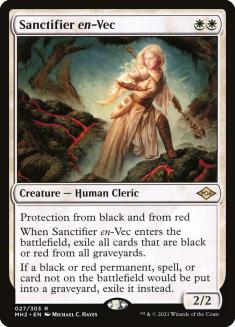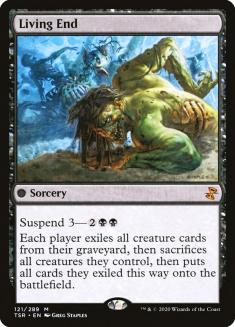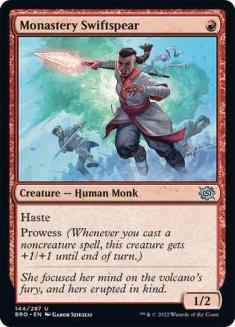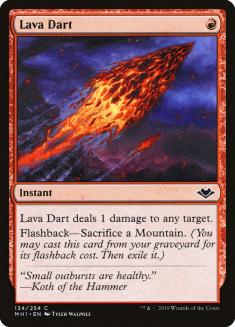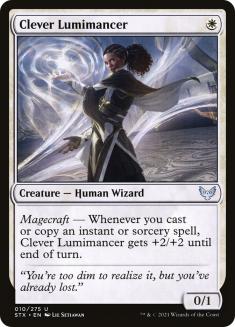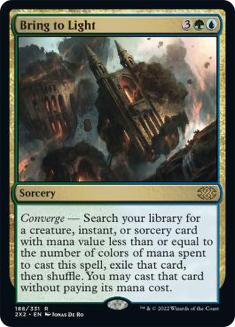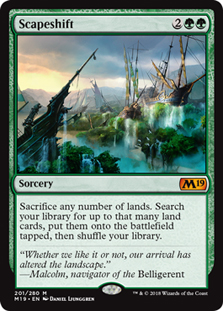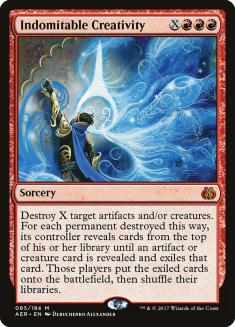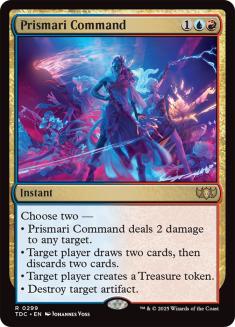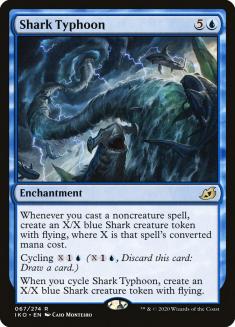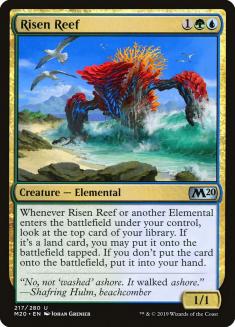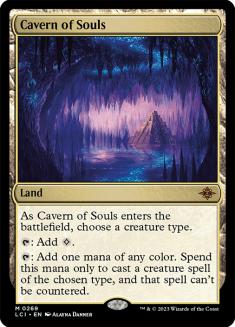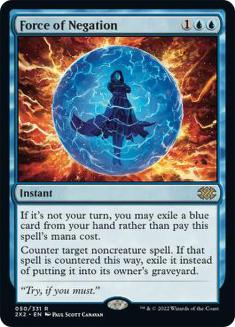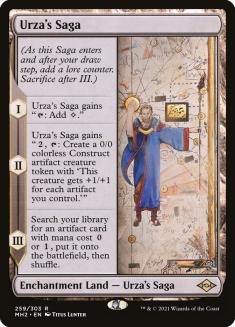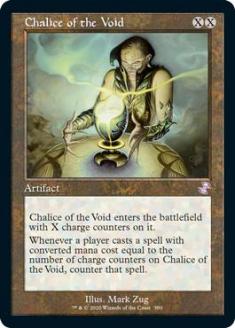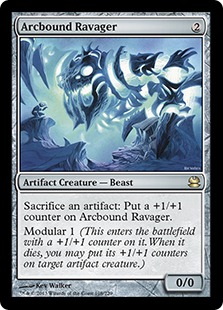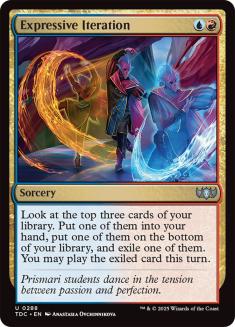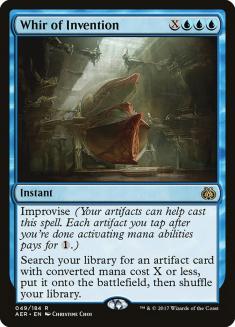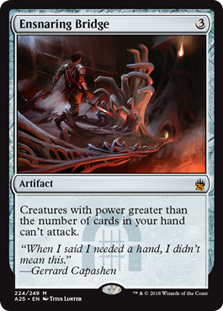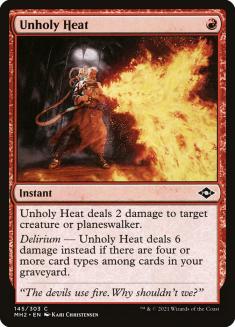Last week, I described Modern as a format made of a few core pillars. I then spent an entire article breaking down one of those pillars: Four-Color Piles.
But that was mostly me telling you why you should play one specific pillar, and most of the pillars have just as many reasonable options as the four-color decks. What about making the decision about which deck to play within each pillar?
The Ragavan Decks
Many decks fall under the same basic plan of “mythic Monkey, better Delver of Secrets, other efficient cards.” Honestly, this decision point is the main reason I wanted to write this article.
Creatures (13)
Lands (15)
Spells (32)

Izzet Midrange is the default if the Ragavan archetype is just good. In a wide field, it has the best overlap between actively killing its opponents and interacting with whatever, mostly thanks to Counterspell being really good against random stuff.
The other big draw to Murktide Regent is Blood Moon. It’s the most effective Ragavan deck at using Blood Moon, again largely thanks to Counterspell keeping the game under control for Moon to take over. If people are playing Amulet of Vigor or Urza’s Tower, this is the right choice here.
The time to start looking at other Ragavan decks over Izzet Midrange is when your opponents are actually doing the things needed to thread the Ragavan-Murktide-Counterspell needle. This is mostly a deck of one-for-ones, and the way it threads through answers is by placing extreme demands on those answers. You need to kill Ragavan on sight, you need to kill Murktide Regent with a completely different set of cards, and between all of that the Izzet player can just cast a Counterspell-protected Murktide against really clunky interaction.
I don’t even think Izzet Midrange is that bad in these spots, since all their cards need to line up right even if they have them. It’s the same Delver of Secrets dance from the last however many years of Legacy, where Delver just kinda wins 45% of the time regardless. There’s just a point where you are playing a 45% deck though, and you need to switch it up against the field then.
Creatures (11)
Lands (18)
Spells (31)

The power of Grixis Midrange (Lurrus) is all in the long game. If it has time to line up its answers and card advantage, it will come out ahead on exchanges. The peak of this is the sheer quantity of ways it has to loop Lurrus of the Dream-Den. If the metagame is still generally good for Ragavan but getting hostile for Izzet Midrange, this is the place you want to move.
Grixis almost completely obsoletes the old Rakdos versions of this deck. The only thing the Rakdos versions really do that the Grixis ones don’t is maindeck Dauthi Voidwalker, and that isn’t even something the Grixis decks couldn’t do.
The main fault with Grixis Midrange is that it’s basically a Grixis deck from 2018. It’s going to struggle the most of any of these Ragavan decks against the resilient, redundant linear decks because it puts up the least pressure of any of these decks. If your answers can’t be sure to line up right exactly on time, you can easily just fold and die.
I would also caution against running Grixis Midrange into incidental graveyard hate in interactive matchups. So much of your engine comes from the “Lurrus, recur something, Kolaghan’s Command back another thing, and so on” pattern. This situation is similar to the Izzet versus the right interaction one: it’s certainly something you can win through if you run into it once or twice, but having to slog through it every round is a reason to re-examine if you’re getting an actual edge by continuing to Grixis people.
A metagame where Living End is a high-priority issue becomes a really bad place for Grixis. Not only is it one of the decks Gerry lists as a bad matchup, the things that beat Living End are things that are will hassle you on this axis.
Creatures (16)
Lands (15)
Spells (29)

Izzet Prowess has fallen out of favor, mostly because Monastery Swiftspear isn’t Ragavan, but Boros Prowess (Lurrus) with sixteen one-drops has popped up here and there. I wouldn’t want to run this into opposing Ragavan decks since they win the Unholy Heat trade-off game, but if something non-interactive like Amulet Titan starts successfully chasing off the larger red decks, this is where you should turn. Lava Dart makes your deck a pretty hard exploit for a lot of the other things that will pop up if other Unholy Heat decks lose metagame share, making Boros the best-positioned to beat the things that beat Grixis and the things that Grixis was suppressing.
Teferi, Wrenn, and Which Friends?
I wrote a lot last week about the unique details of all the four-color piles featuring Wrenn and Six and Teferi, Time Raveler. There was a bit of this decision-making sprinkled in there, but it’s worth specifically spelling out which I would play when.
Creatures (7)
Planeswalkers (5)
Lands (25)
Spells (23)

Scapeshift is in a similar boat to Izzet Midrange. It’s just the default good version of Four-Color Pile. If casting big spells with some actual interaction behind them is a generally good thing in the metagame, this is the right deck to start with.
Creatures (2)
Planeswalkers (8)
Lands (22)
Spells (28)
- 4 Lightning Bolt
- 1 Mountain
- 1 Island
- 4 Remand
- 4 Indomitable Creativity
- 2 Transmogrify
- 4 Prismari Command
- 4 Prismatic Ending
- 4 Hard Evidence
Sideboard

There are two reasons to swap to Four-Color Indomitable Creativity: Prismari Command and needing the capacity to Turn 4 kill someone. Really, this is just the Wrenn and Six plus Teferi, Time Raveler deck you play if you really want to beat Mono-White Hammer (Lurrus) with some upside against the Scapeshift lists. If you play Emrakul, the Aeons Torn, the coverage against Dimir Mill (Lurrus) is another.
Honestly, that sounds pretty appealing right now. I might be making some Emrakuls this week.
Creatures (7)
Planeswalkers (8)
Lands (21)
Spells (24)

The pure control versions of this deck are only a draw to me if I need to beat something like Boros Prowess (Lurrus) or Burn, where an overload of removal is the best thing to have. That might sound good against Puresteel Paladins, but the combo kills with light interaction are just as good as having a bunch of potentially awkward removal.
Creatures (21)
Planeswalkers (6)
Lands (19)
Spells (14)

What about the Elementals deck? First off, I would play less Wrenn and Six in this deck than kanister did since it’s a dead end once you start going off, but Four-Color Elementals being great in a metagame is more of an art than a science. You want your opponents to have creatures, but the right kind and density. You trade well with removal, but you need your opponent to run out of removal at some point and to give you time to keep playing things after a removal spell.
Maybe the cleanest reason to play Four-Color Elementals is Cavern of Souls. The redundancy of that plus Teferi, Time Raveler at blanking opposing Counterspells is game-warping in some matchups.
The cleanest reason to not play Elementals is if your coverage just doesn’t line up right. It’s pretty tough for Endurance, Force of Negation, and Solitude to miss something, but something like Ad Nauseam could be an issue for Four-Color Elementals. I don’t know if Ad Nauseam is actually an issue for any deck, especially since Teferi locks out suspend spells, but it could be.
Rhinos or Zombies?
Creatures (16)
Lands (19)
Spells (25)
- 1 Forest
- 1 Mountain
- 2 Island
- 4 Violent Outburst
- 4 Fire
- 2 Dead
- 4 Force of Negation
- 4 Crashing Footfalls
- 1 Sea Gate Restoration
- 2 Prismari Command
Sideboard

Creatures (30)
- 4 Street Wraith
- 4 Architects of Will
- 4 Shardless Agent
- 4 Curator of Mysteries
- 4 Striped Riverwinder
- 2 Brazen Borrower
- 4 Waker of Waves
- 4 Grief
Lands (18)
Spells (12)

There’s a pretty straightforward question in the Shardless Agent camp: Crashing Footfalls or Living End? The Glimpse of Tomorrow deck is cool, but it loses too much of the free interaction equity of Force of Negation to be attractive.
This all comes down to a matter of scale. Do you expect your opponents to outsize or overpower two 4/4s? The biggest indicator here to me is Urza’s Saga, which basically makes an entire Crashing Footfalls with less effort. If your opponents are all Ragavans and Dragon’s Rage Channelers, two 4/4s are about the same as a bunch of doofuses and you should play the more functional deck. If you have to beat Construct tokens or another big gameplan, time to fire up some Striped Riverwinder.
I don’t really consider the hate cards to be a noticeable difference between the two decks. You’re loaded on counter-interaction either way, and the Griefs out of Living End on top of the answers shared by the cascade decks are about at par with sideboard graveyard hate. If your opponent has all the hate and the right pressure, it isn’t going to matter a ton which of these decks you’re playing. Maybe in some weird future Dredge has everyone on eight graveyard hate cards and it actually does matter, but not anytime soon.
The one caveat is sometimes Living End is a terrible idea for a random reason that breaks the symmetry of Living End. It’s hard to say exactly what that will be, but I’ll know it when I see it.
Urza’s Saga + 56 Other Cards
Creatures (24)
Lands (11)
Spells (25)

It’s pretty clear that Mono-White Hammer (Lurrus) is the Urza’s Saga deck of choice these days. It has the staying power of Urza’s Saga with an absurd combo clock.
Why would you play Urza’s Saga and not Colossus Hammer?
If Grixis Midrange takes top billing over Izzet Midrange, I would start looking at other Urza’s Saga decks that aren’t low-end combo. This isn’t just because Grixis is especially well suited for picking apart a bunch of smaller creatures with specific relevant interactions, but also because Grixis is really poorly suited for dealing with Urza’s Saga as an enchantment land. If your other cards are things like Thought Monitor that are pressing your opponent on cards, or you can really Expedition Map chain off on Urza’s Saga, or you can actually interact with the Grixis deck’s creatures, you’re going to press the card advantage of Urza’s Saga against them on too many angles for them to handle well.
That all said, I would much rather be playing Puresteel Paladin against the entire rest of the metagame. Anything slower is going to run into issues with any Teferi deck with a combo end-game, or really just run into issues with the pseudo-mirror against Puresteel Paladin. Maybe you can argue Amulet Titan covers some of those bases, but if people are trying to beat the four-color decks with Blood Moon that can’t also be good for you. And that’s before we even get to talking about Unholy Heat.
Creatures (4)
Planeswalkers (2)
Lands (20)
Spells (34)

But what if you can mimic that fast kill with a hate card? I like the idea of branching off to the Urza, Lord High Artificer section of the Urza’s Saga decks when people really load up on creature hate and start branching into noncreature linear decks. Having ready access to Torpor Orb, Chalice of the Void, and Ensnaring Bridge causes issues for most of the decks in the format.
The one issue is this all involves people fighting Mono-White Hammer on the creature side of things and not the artifact one. Force of Vigor or Ancient Grudge is still a huge issue for this deck, at which point just play the Hammer deck that might force your opponent to exit the game Turn 2.
Creatures (21)
- 4 Street Wraith
- 4 Ovalchase Daredevil
- 3 Urza, Lord High Artificer
- 3 Emry, Lurker of the Loch
- 4 Asmoranomardicadaistinaculdacar
- 3 Thought Monitor
Lands (19)
Spells (20)

Creatures (25)
- 4 Street Wraith
- 4 Ovalchase Daredevil
- 3 Seasoned Pyromancer
- 2 Kroxa, Titan of Death's Hunger
- 4 Asmoranomardicadaistinaculdacar
- 4 Dragon's Rage Channeler
- 4 Ragavan, Nimble Pilferer
Lands (17)
Spells (18)

This is the pillar where the decision on which deck to play is most open to immediate change. We are getting close to people figuring out how to combine Urza’s Saga with normal good cards. As soon as it looks like that has happened, play that deck immediately.
The Rest of the Format
There’s a shocking lack of decks that fall outside these pillars doing well in the format. If you summed them all up from the winners’ metagame, you might match the prevalence of Ragavan. That’s just because the cards in the core pillars are so insanely good. This isn’t 2018 where the rogue decks are also broken compared to the fair decks scrambling to cover the spread. At best you’re half a turn ahead of the good Modern Horizons 2 cards like Dragon’s Rage Channeler if they can’t interact well with your deck, and if you have to play a fair game their broken fair cards will come out ahead.
So rather than worrying about if your opponents are playing the Leyline of the Void that wrecks your fringe strategy, worry about if your plan lines up well against the normal lines of interaction. If Unholy Heat is a relevant card against you, your deck is probably a nonstarter.
Unless, of course, you just add the pillar cards of Modern to your deck and compete on the same levels as everyone else.

